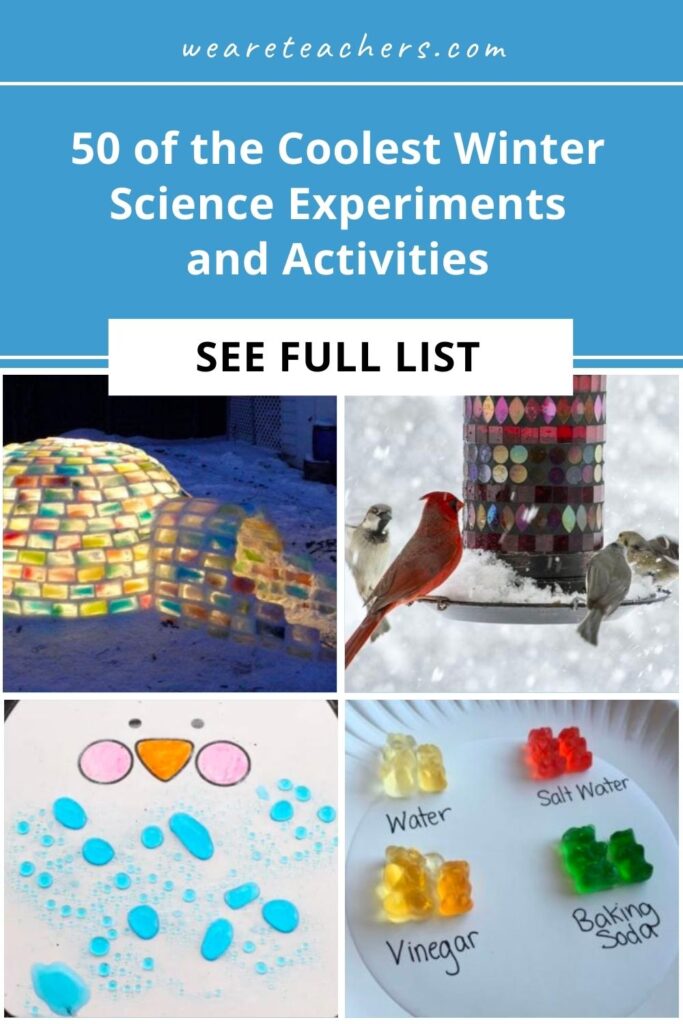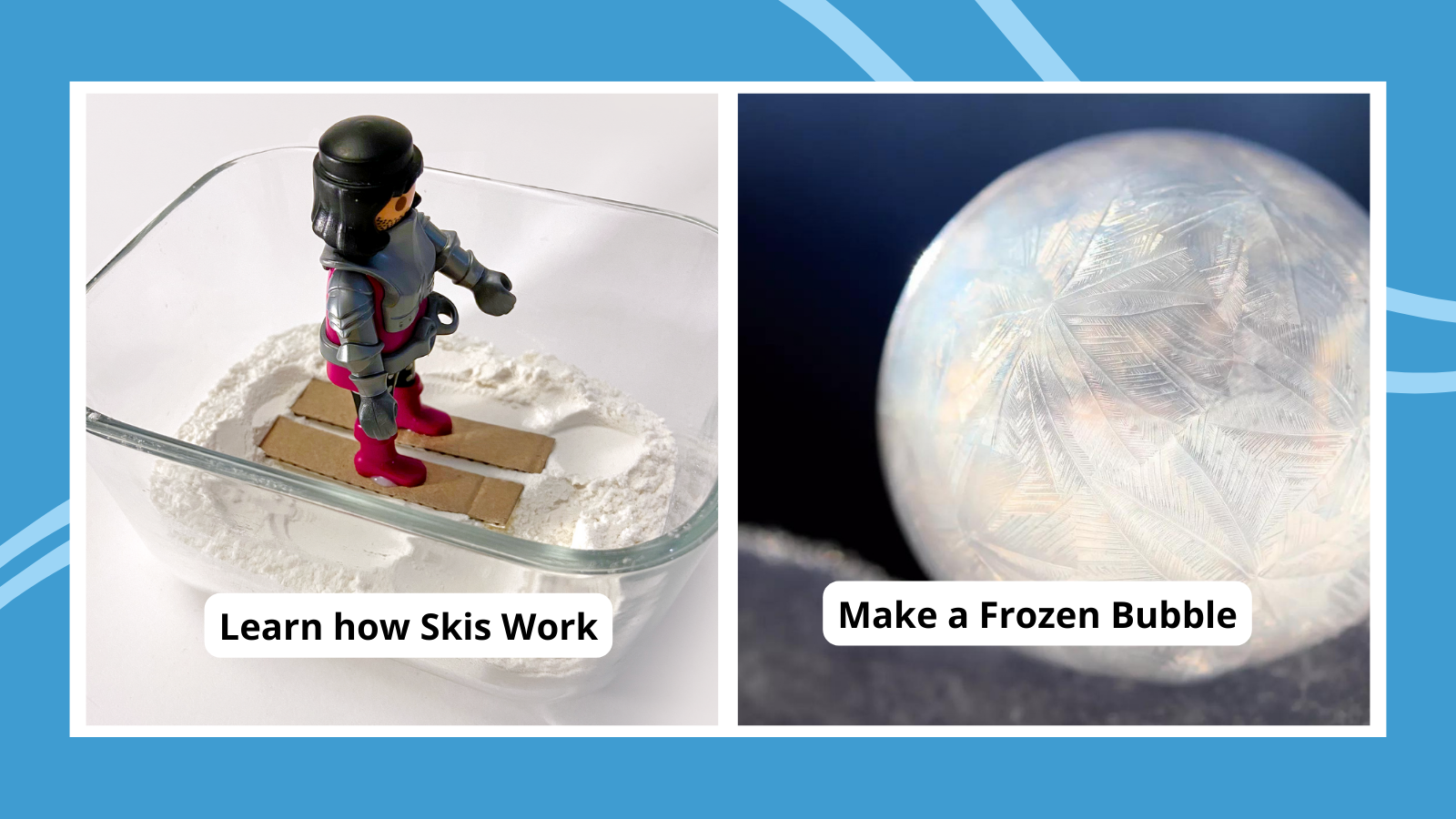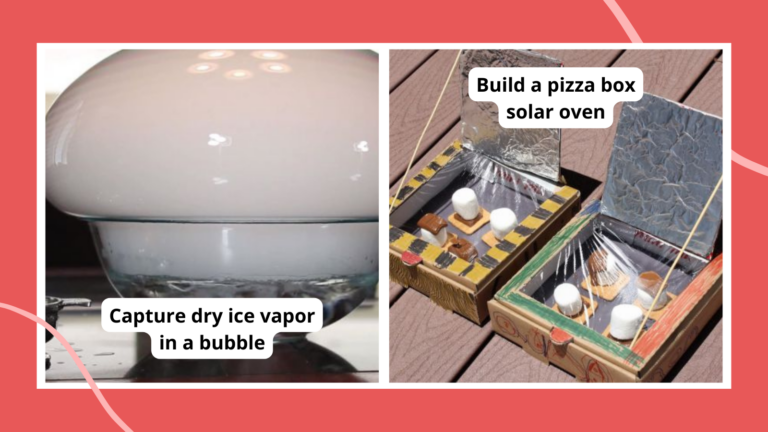Winter means shorter days, colder temperatures, and lots of ice and snow. That means it’s time for experiments that you can only do in winter! These experiments and activities are perfect for keeping kids busy and learning all winter long. No snow where you live? No worries! You can still do most of these winter science experiments and activities with a freezer or some fake snow instead.
1. Study the science of snowflakes
Did you know that every snowflake has six sides? Or that snowflakes form from water vapor, not raindrops? There’s lots to learn about the science of snowflakes.
Learn more: What Is Snow? How Does It Form? (Free Google Slides Lesson + Printable Worksheets)
2. Grow the Grinch’s heart
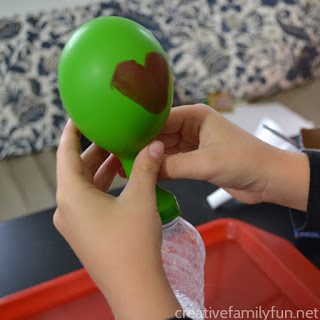
To begin, grab a green balloon and use a red Sharpie to make a heart on it, then fill the balloon with a few teaspoons of baking soda. Then, fill a water bottle with vinegar. Finally, put the end of your balloon over the water bottle and watch the Grinch’s heart grow!
Learn more: Grow the Grinch’s Heart activity at Creative Family Fun
3. Weigh and compare snow
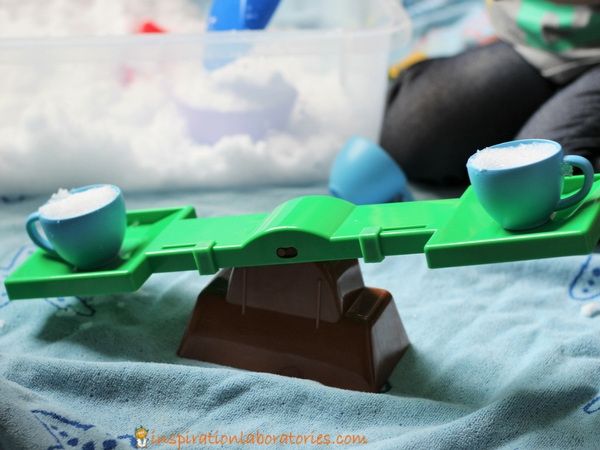
This is a simple but effective way to get kids thinking. Scoop up two cups of snow and weigh them. Are they the same? If not, why? Allow the snow to melt. Does it weigh the same? So many questions from such a simple experiment!
Learn more: Weighing Snow activity at Inspiration Laboratories
4. Determine how weather affects snow textures
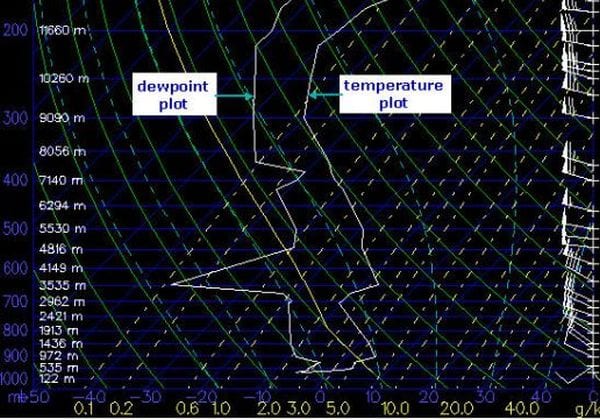
Anyone who sees a lot of snow every winter knows there are many different kinds—heavy wet snow, dry powdery snow, and so on. Older students will enjoy this winter science project that tracks atmospheric conditions to find out how we get different types of snow.
Learn more: Snow Science activity at Science Buddies
5. Make candy cane slime!
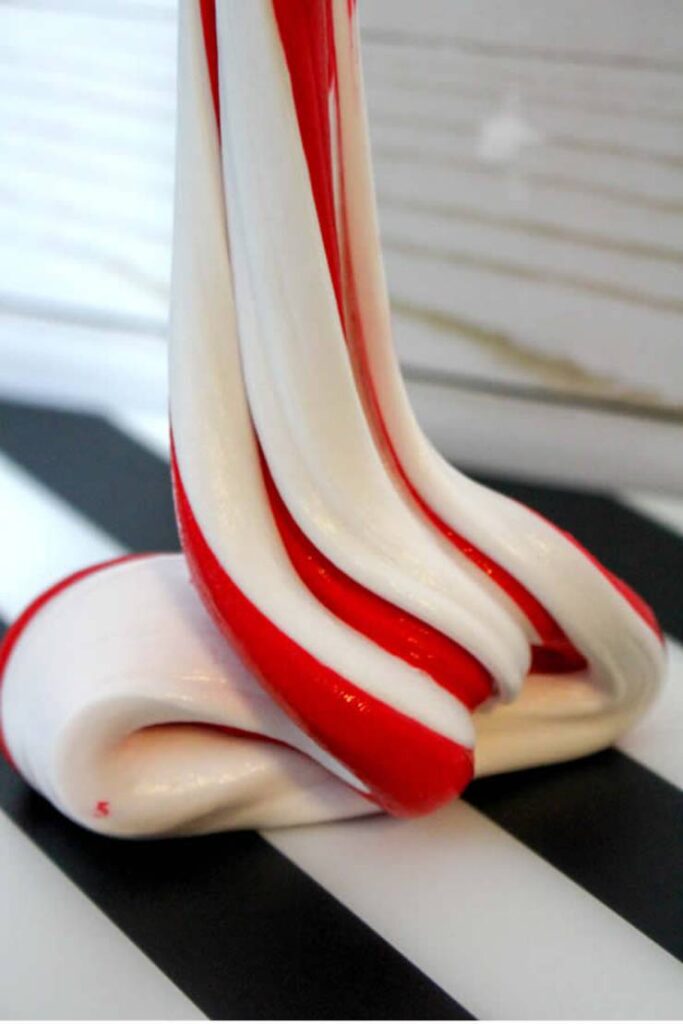
A little bit of everything, including glue and shaving cream, goes into this fun, candy cane–colored slime. We especially love the idea of adding a little bit of peppermint extract or candy cane fragrance oil for a pleasant scent!
Learn more: Candy Cane slime at Kimspired DIY
6. Discover the beauty of frozen bubbles
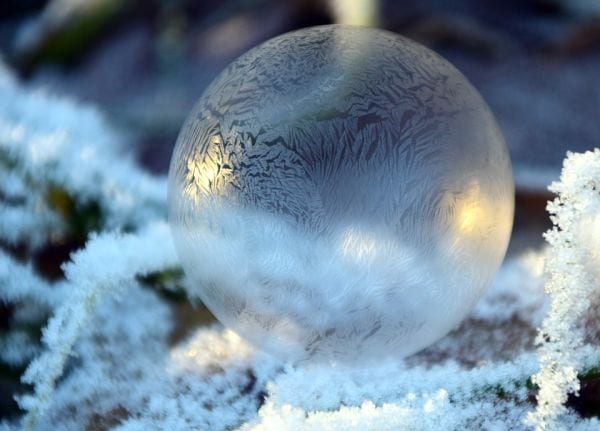
Bubble experiments are always fun, but frozen bubbles add a whole new dimension of beauty. Take your class outside to blow bubbles when the temps are below freezing, and watch the magic happen! (No freezing temperatures where you live? The link below offers tips for trying this with dry ice.)
Learn more: Frozen Bubbles at ThoughtCo
7. Find out how penguins stay dry
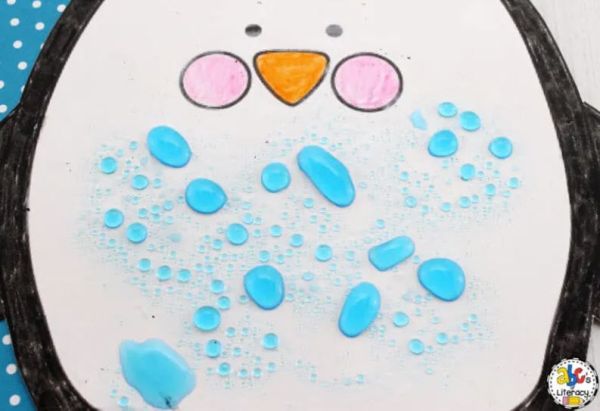
It seems like penguins should freeze solid when they get out of the water, right? So what protects their feathers and keeps them dry? Find out with this fun experiment using wax crayons.
Learn more: Penguin activity at ABCs of Literacy
8. Make a beautiful watercolor ice painting
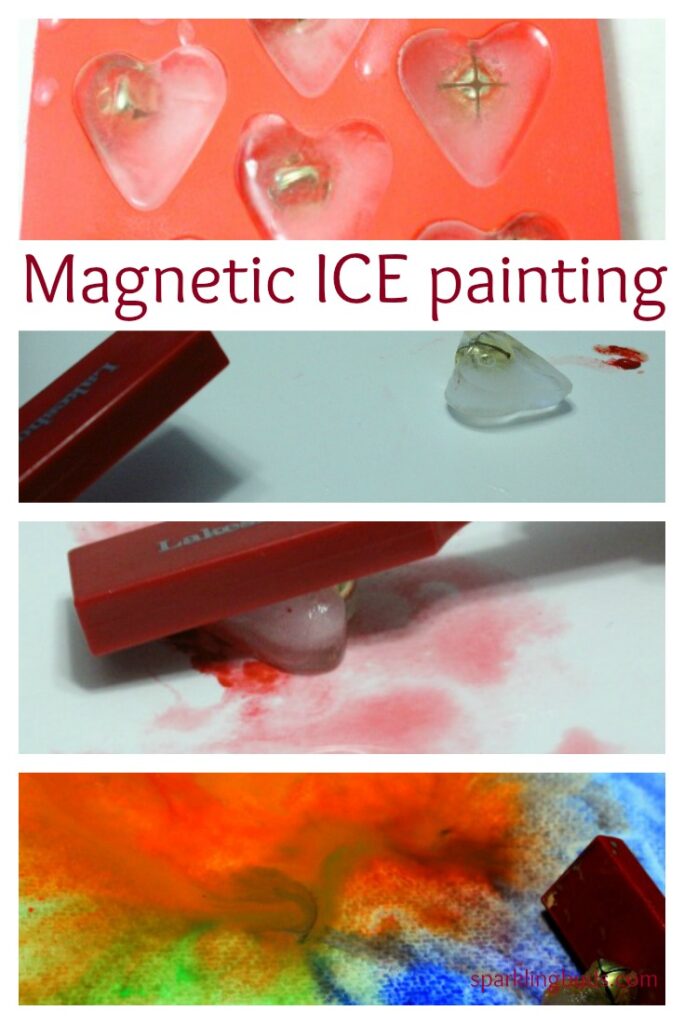
This is a fairly simple experiment that yields really big results! Grab some watercolor paint and paper, an ice tray, and some small metal objects, then get started.
Learn more: Magnetic ice painting at Sparkling Buds
9. Waterproof a boot
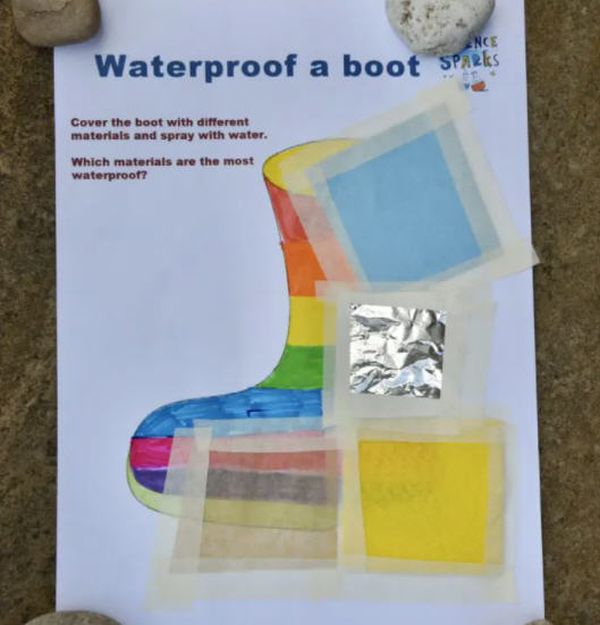
Now that you know how penguins stay dry, can you apply that knowledge to a boot? Ask kids to select various materials and tape them over the free boot printable. Then, test their hypotheses and see which ones work best.
Learn more: Waterproof a boot at Science Sparks
10. Learn about condensation and frost
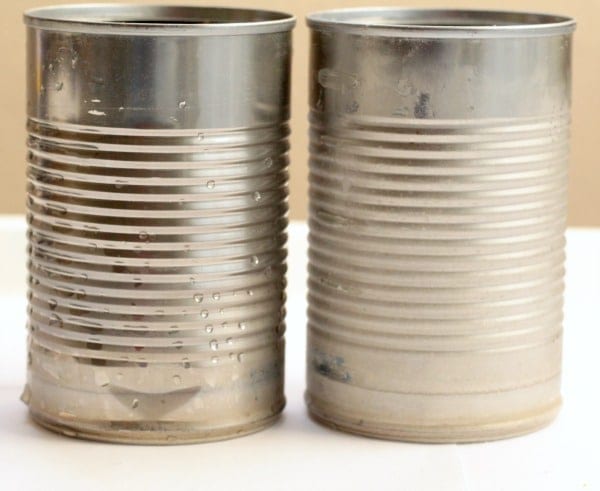
Use snow or ice cubes for this winter science experiment that explores condensation and the formation of frost. All you need are some metal cans and salt.
Learn more: Condensation experiment at STEAMsational
11. Crush a can with air
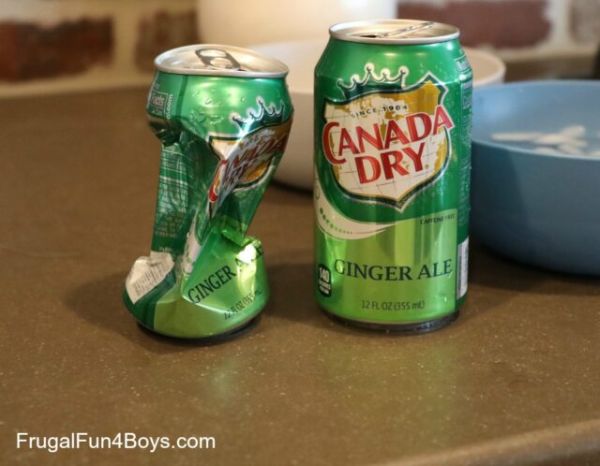
Scoop up some snow and bring it inside to use for this air-pressure experiment. (Use caution, because you’ll need boiling water too.)
Learn more: Crushing cans at Frugal Fun for Boys and Girls
12. Erupt a snow volcano
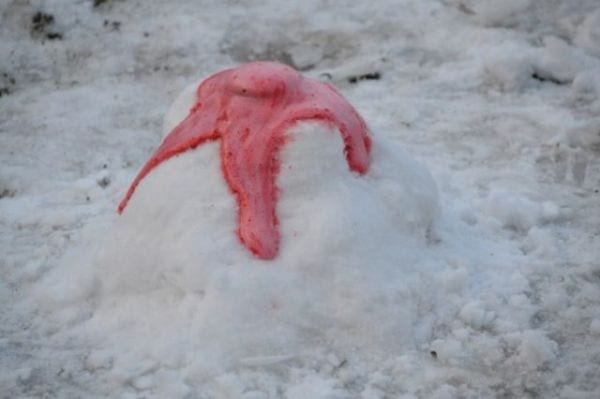
Take the classic baking soda volcano experiment and add snow! Kids learn about acids and bases with this popular winter science project.
Learn more: Snow volcano at Science Sparks
13. Grow your own polar bear
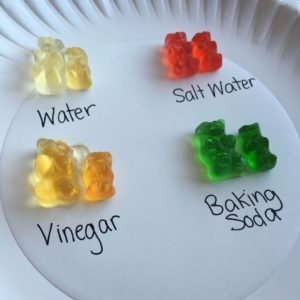
This is such a fun and easy winter science experiment that will certainly be a hit in your classroom. All you need is a cup of fresh water, a cup of salt water, a cup of vinegar, a cup of baking soda, and some gummy bears. (Be sure to have extra gummy bears on hand in case your little scientists get hungry.)
Learn more: Grow Your Own Polar Bear activity at The Sprinkle Topped Teacher
14. Explore how mittens keep you warm
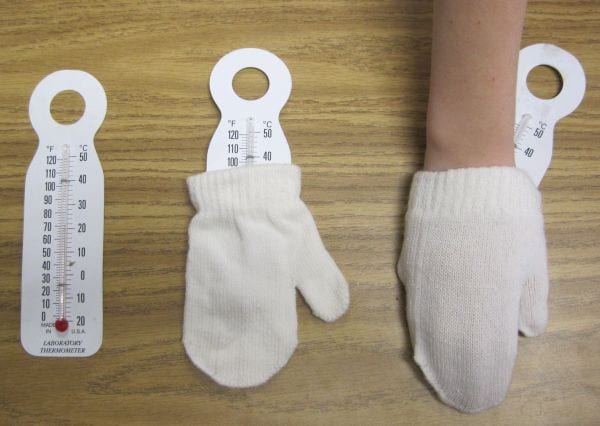
Ask little ones if mittens are warm, and they’ll likely answer “yes!” But when they measure the temperature inside an empty mitten, they’ll be surprised by what they find. Learn about body heat and insulation with this easy experiment.
Learn more: Mitten experiment at Classroom Magic
15. Don’t melt the ice
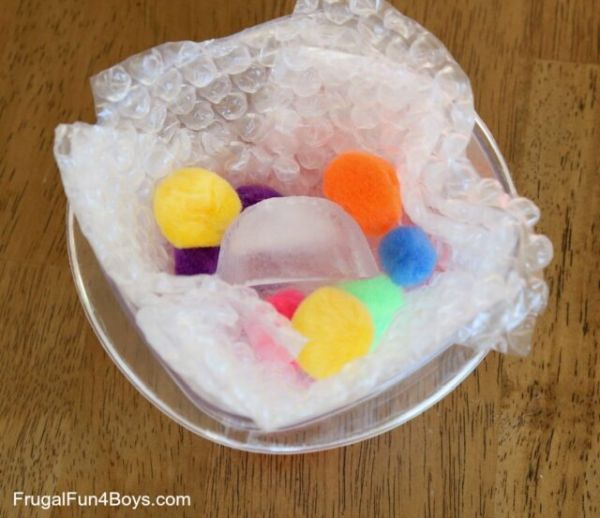
We spend a lot of time in winter trying to get rid of ice, but what about when you don’t want the ice to melt? Experiment with different forms of insulation to see which keeps ice frozen the longest.
Learn more: Ice insulation experiment at Frugal Fun for Boys and Girls
16. String up some sticky ice
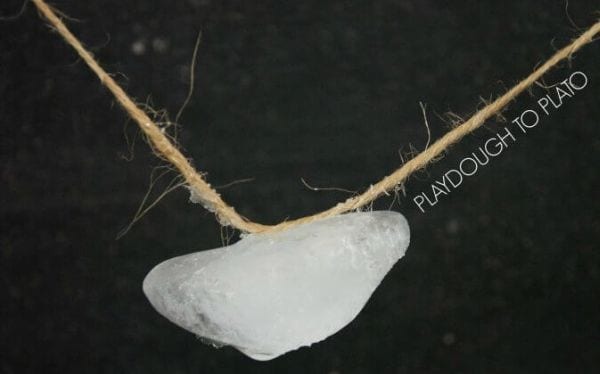
Can you lift an ice cube using just a piece of string? This experiment teaches you how, using a little salt to melt and then refreeze the ice with the string attached. Bonus project: Use this process to make a garland of colored ice stars (or other shapes) and hang them outside for decoration.
Learn more: Ice cube string activity at Playdough to Plato
17. Construct an igloo
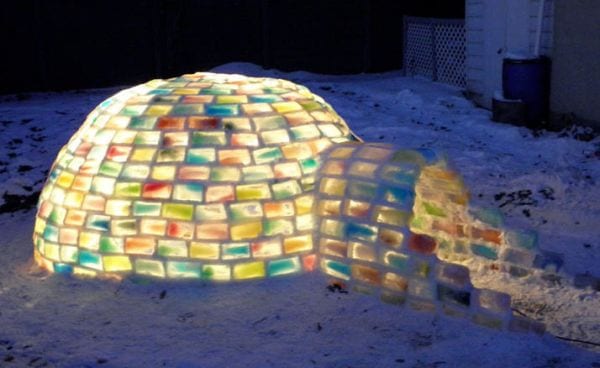
Calling all future engineers! Freeze blocks of ice (milk cartons work well) and create a life-size igloo with your class. If this seems too ambitious, try a smaller version with ice cubes instead.
Learn more: Build an igloo at Science Buddies
18. Light up some snowmen with a simple circuit
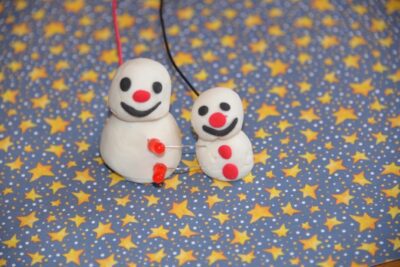
Create a simple parallel circuit using a couple of play-dough snowmen, a few LEDs, and a battery pack. Kids will get a thrill out of seeing their snowmen light up!
Learn more: Light-Up Snowman experiment at Science Sparks
19. Measure the water content of snow
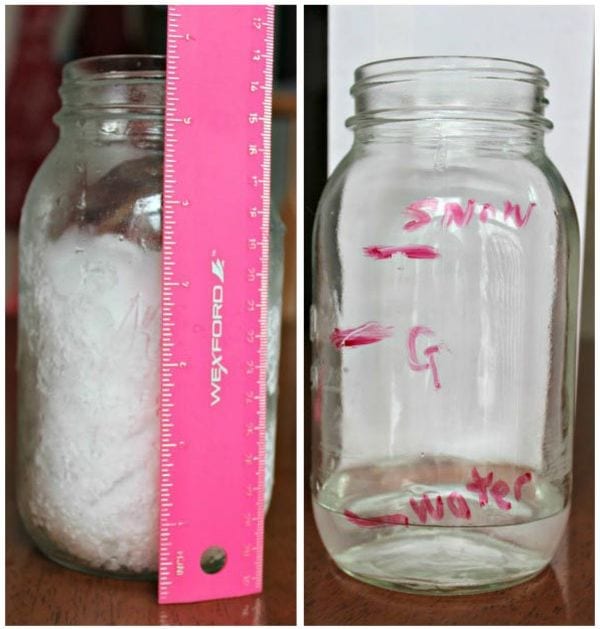
Two inches of snow is not the same as two inches of rain. This easy winter science experiment measures the amount of water actually found in an inch of snow.
Learn more: Snow measurement at KC Edventures With Kids
20. Experiment with candy canes
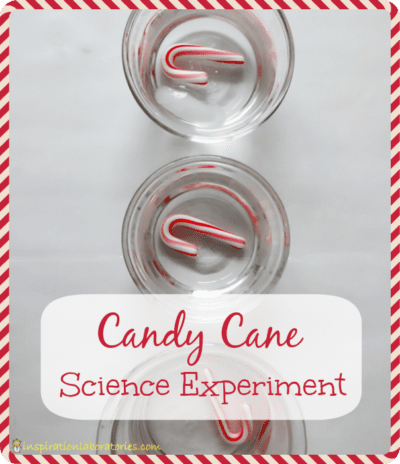
Experiment with how quickly candy canes dissolve in different temperatures of water. Keep some extras on hand since the temptation will likely be too much for your favorite scientists.
Learn more: Candy cane science at Inspirational Laboratories
21. Have fun with hockey science
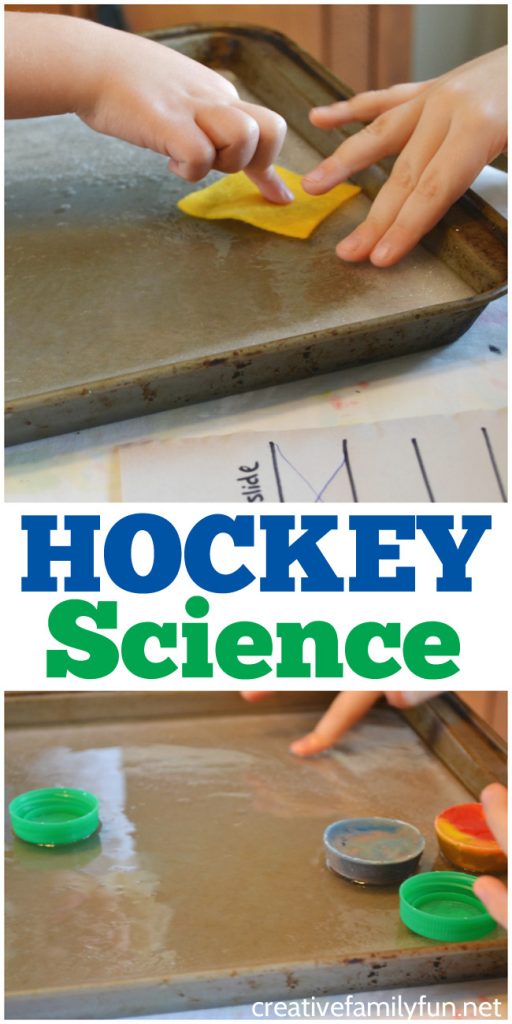
A hockey puck slides effortlessly across the ice, but what about other objects? Gather up some classroom items and take them out to a frozen puddle to see which slide best.
Learn more: Hockey Science at Creative Family Fun
22. Determine the best way to melt ice
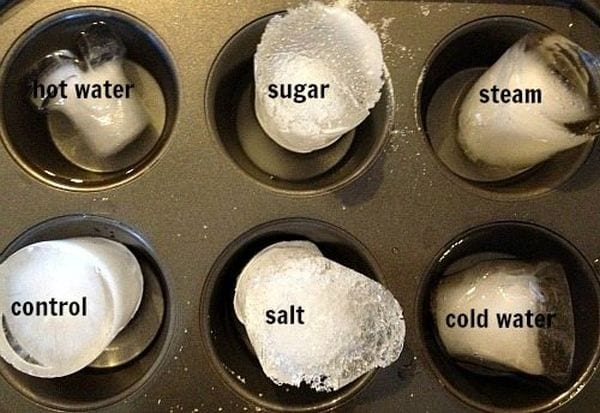
Conventional wisdom says we sprinkle salt on ice to melt it faster. But why? Is that really the best method? Try this winter science experiment and find out.
Learn more: Ice-Melting Experiment at The Chaos and the Clutter
23. Freeze oobleck
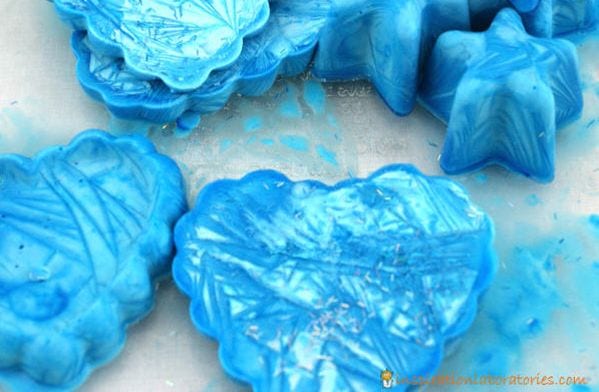
Kids love to play with the mysterious oobleck, a non-Newtonian liquid that becomes firm under pressure. Try freezing it to increase the fun factor and see how it reacts as it melts.
Learn more: Frozen Oobleck at Inspiration Laboratories
24. Make an ice lantern
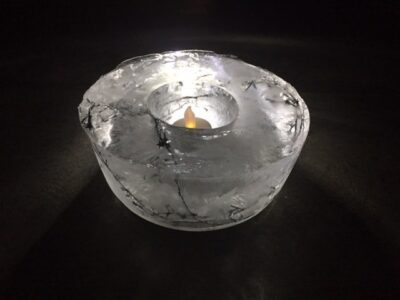
We love that this STEM project also combines art and creativity since kids can freeze almost anything into their lanterns, from sequins to dried flowers.
Learn more: Ice Lantern activity at What I Have Learned Teaching
25. Watch wintertime birds
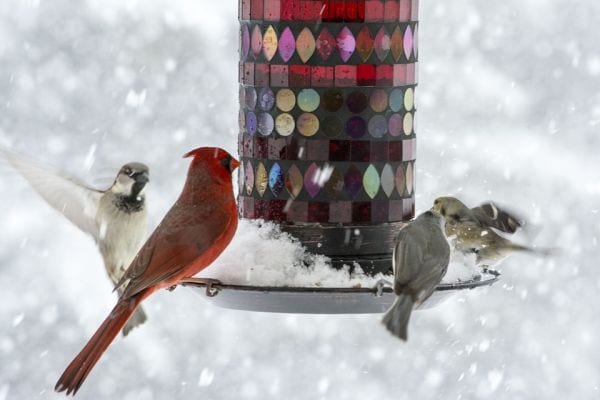
Winter is a great time to set up a bird feeder and observe our feathered friends. Learn to identify common backyard birds in your area and discover which foods they prefer. Take this winter science activity even further by signing up your class for Project FeederWatch, a citizen science project all about winter bird-watching.
Learn more: Winter bird-watching guide at The Lead Learner Mom
26. Play around with pine cones
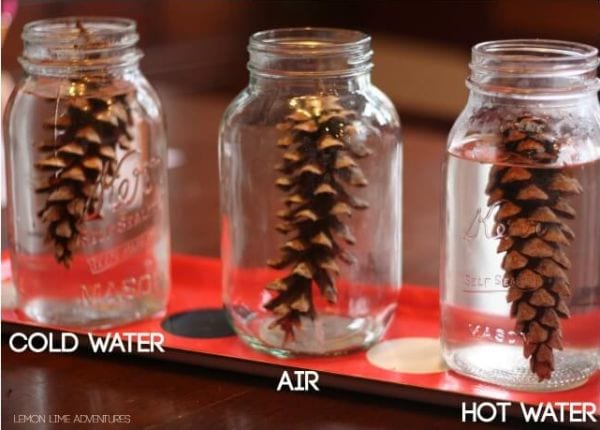
Head out to the snowy woods and gather up some pine cones, then bring them inside and experiment to see what makes them open and release their seeds.
Learn more: Pine Cone Experiment at Lemon Lime Adventures
27. Conduct a winter nature study
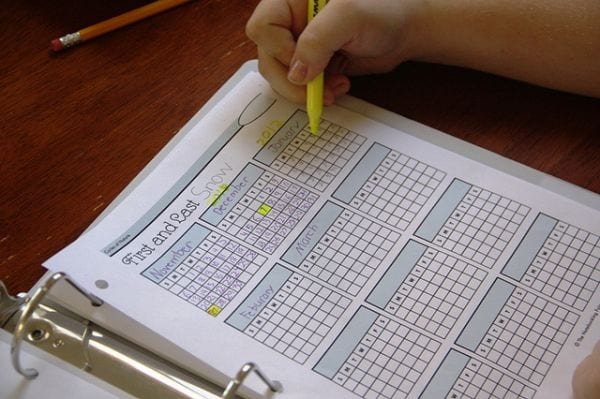
There are so many natural wonders to study during the winter months! Measure temperatures, track the snowfall, look for animal prints—and that’s just a few ideas. Make winter nature study even easier with free printables at the link below.
Learn more: Winter nature study at Jimmie’s Collage
28. Find out how arctic animals stay warm
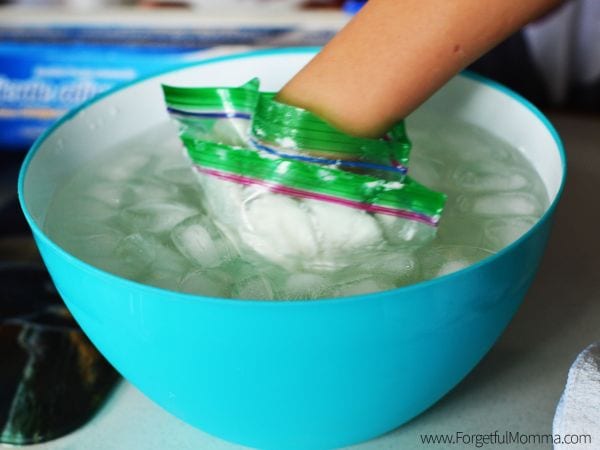
Grab some rubber gloves, zipper bags, and a can of shortening to learn how layers of fat help to insulate animals and keep them warm. Do this winter science experiment outside in the snow or inside with a bowl of cold water and ice cubes.
Learn more: Arctic animal experiment at Forgetful Momma
29. Add color to melting ice
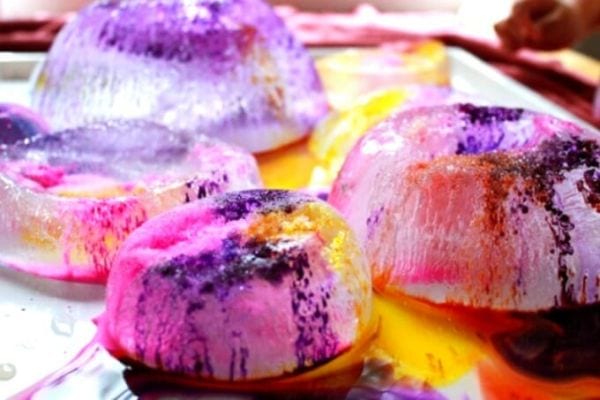
In this colorful winter science activity, you’ll use salt to start the ice melting (it lowers the freezing point of water). Then, add pretty watercolors to see the ravines and crevices that form as the ice melts.
Learn more: How to make colorful ice at Artful Parent
30. Melt ice with pressure
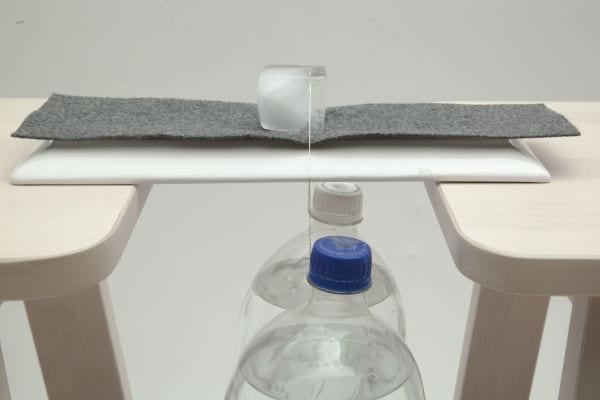
There are plenty of experiments that melt ice with salt, but this one is a little different. Instead, it uses the heat produced by pressure to move a piece of wire through a block of ice.
Learn more: Ice-melting experiment at KiwiCo
31. Melt a snowman
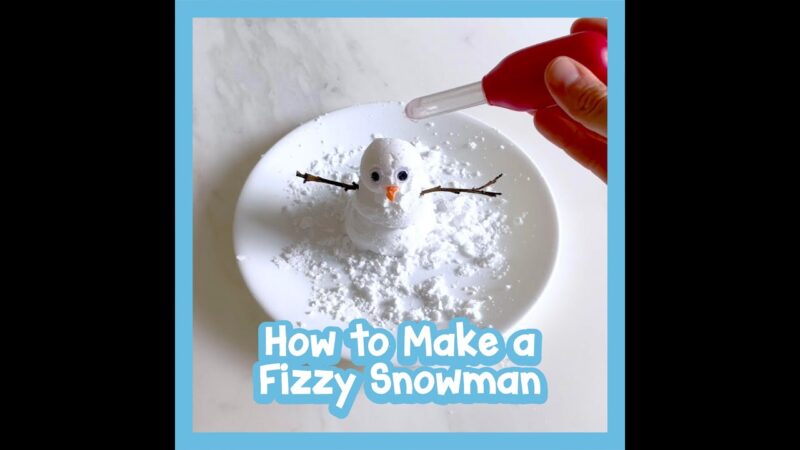
First, make a snowman out of baking soda and shaving cream. Then, fill droppers with vinegar. Finally, let your scientists take turns squirting the snowman and watching them fizz and melt.
Learn more: How To Make a Fizzy Snowman at 7 Days of Play
32. Make instant ice
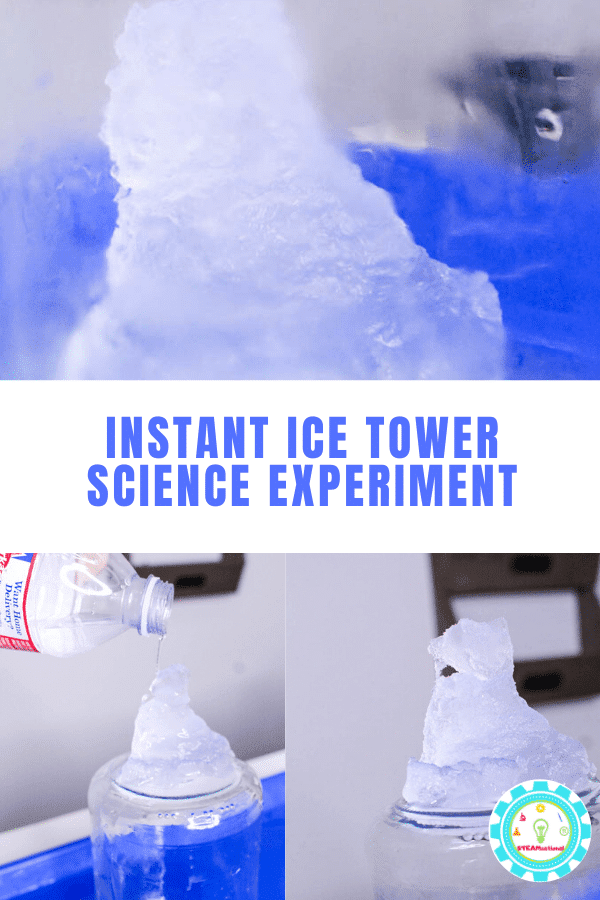
Here’s a winter science experiment that seems more like a magic trick. Place a bottle of water in a bowl of ice (or snow) and rock salt. When you take it out, the water is still liquid—until you slam it against the counter and it freezes instantly! Find out how it works at the link below.
Learn more: Rock Salt Experiment at STEAMsational
33. Create rainbow ice towers
Once you master the instant ice trick, add some food coloring and see if you can create instant rainbow ice towers! The video above walks you through the process.
34. Paint salt snowflakes to learn about absorption
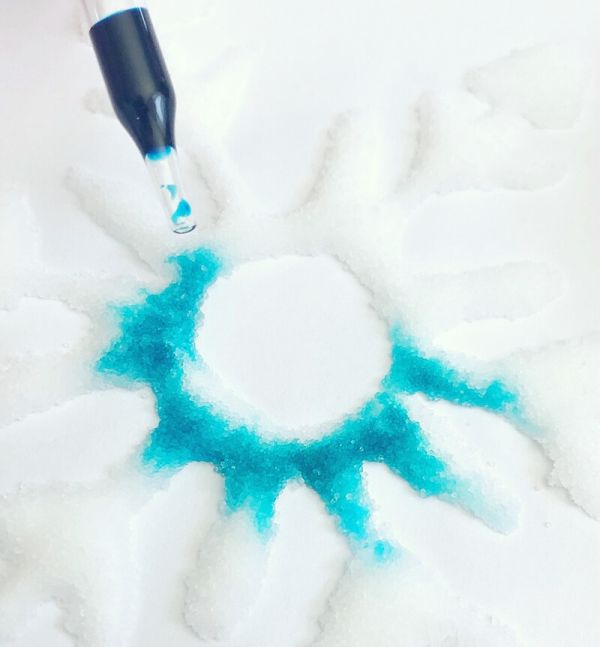
Salt painting is a cool way to learn about the process of absorption as well as color mixing. Simply mix salt with glue and make your snowflakes. Then drop colored water onto the salt and see it spread, drop by drop.
Learn more: Salt painting at Little Bins for Little Hands
35. Experiment with fake snow recipes
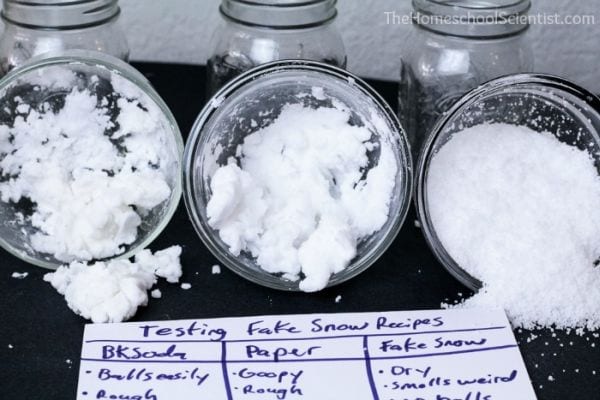
No snow where you live? You’ll just have to make your own! Try a variety of fake snow recipes and determine which makes the best batch.
Learn more: Fake Snow activity at The Homeschool Scientist
36. Build a crystal snowman
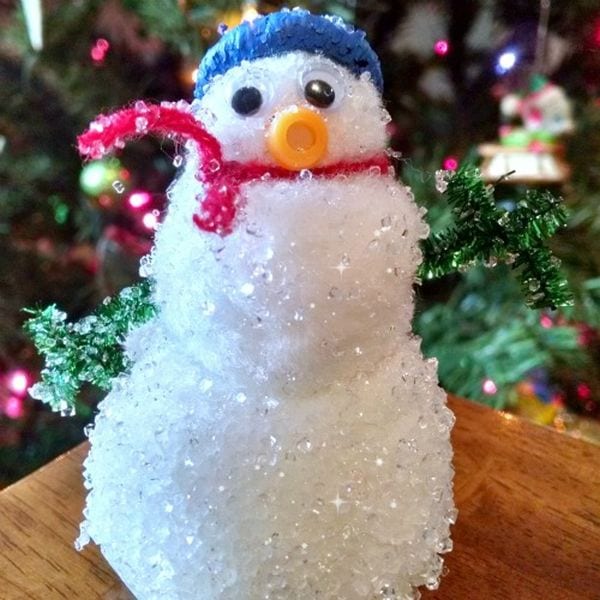
It wouldn’t be a winter science list without at least one crystal project, right? This adorable snowman version is a unique twist on the popular supersaturated solutions experiment. Get the how-to at the link below.
Learn more: Crystal snowman activity at The Science Kiddo
37. Cook up hot ice
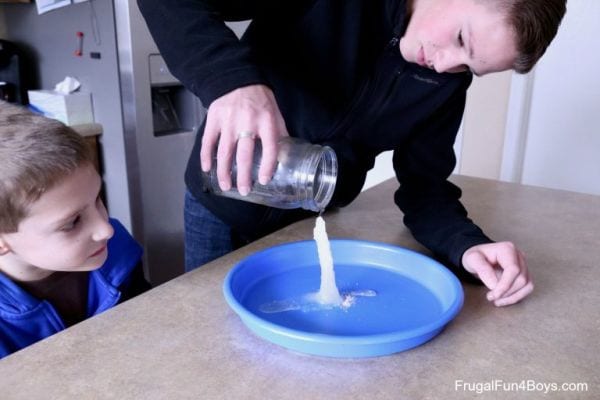
Tired of frozen toes in the name of science? This experiment has ice in the name but will keep you warm and toasty. It’s essentially another kind of crystal project, but this one forms the crystals instantly, due to the way you cook up the solution.
Learn more: Hot ice experiment at Frugal Fun for Boys and Girls
38. Savor the sweetness of hot cocoa science
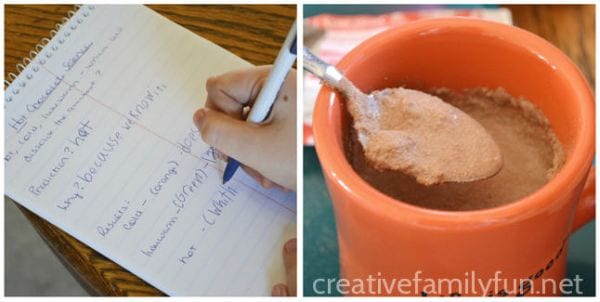
After all these ice-and-snow winter science projects, you deserve a reward. This hot cocoa experiment aims to find the optimal temperature for dissolving hot cocoa mix. Once you’ve found the answer, you get to sip on the delicious results!
Learn more: Hot Chocolate Science at Creative Family Fun
39. Excavate LEGO bricks from blocks of ice
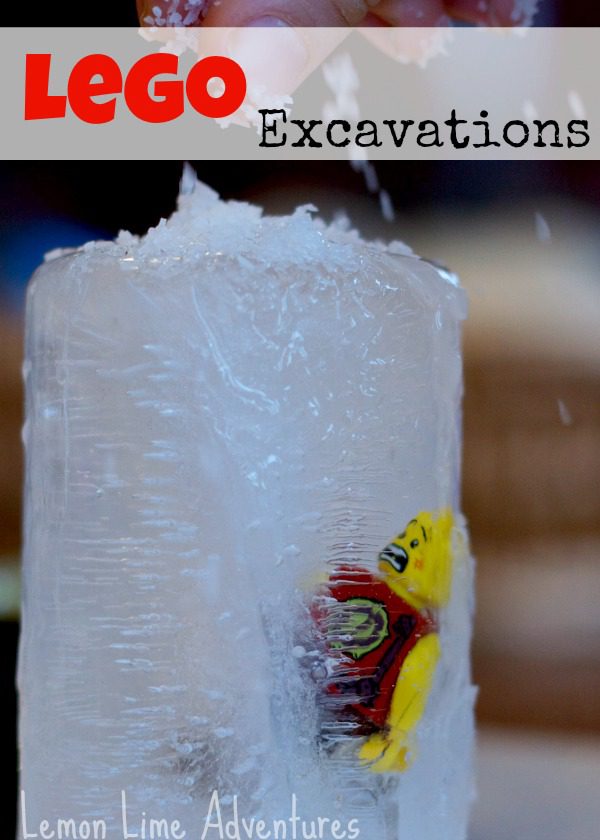
Tell your students to imagine they are archaeologists, then have them freeze a favorite LEGO figure, or “fossil,” into a block of ice. Finally, ask them to carefully excavate the fossil from the glacier while keeping in mind the fragility of the fossil.
Learn more: LEGO ice block activity at Lemon Lime Adventures
40. Explode a snowman!
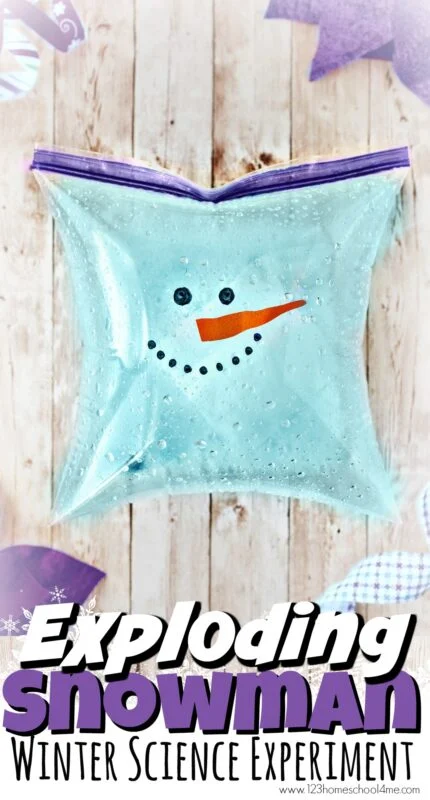
This is such a fun introduction to chemistry for preschoolers or early elementary-age students. Have your students decorate a ziplock bag to resemble a snowman’s face and then put 3 teaspoons of baking soda in a paper towel inside the bag. Finally, put 1 to 2 cups of distilled vinegar into the bag and have fun watching the reaction!
Learn more: Exploding Snowman experiment at 123 Homeschool 4 Me
41. Winter solstice challenge
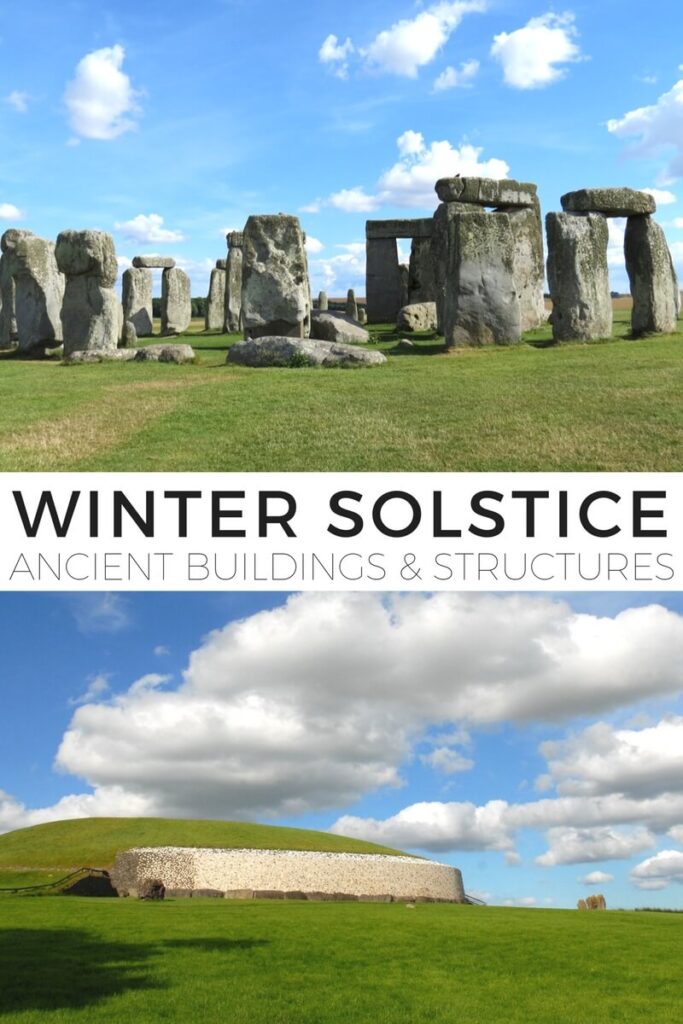
The winter solstice, the shortest day of the year, provides a lot to teach in terms of the sun, shadows, the rotation of the Earth, and how humans celebrate. Teach students about the winter solstice with books like The Shortest Day by Susan Cooper, then have them create a model Stonehenge. Then, use a flashlight or other light to re-create what the structure looks like on the winter solstice and other days.
Check out Winter Solstice lessons at Little Bins for Little Hands
Buy it: The Shortest Day at Amazon
42. Catapult a snowman
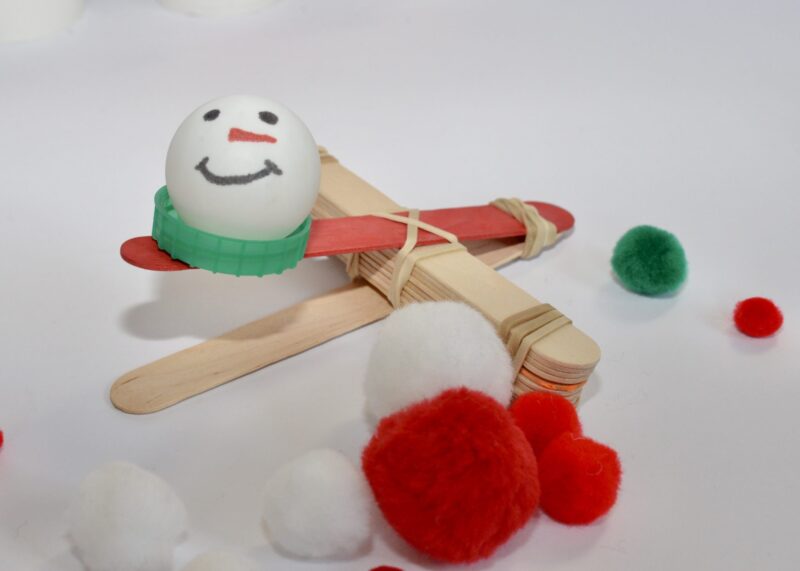
This one starts out as fun and ends with serious science. Create a catapult using Popsicle sticks and rubber bands. Then, create a snowman out of a Ping-Pong ball and see how far you can catapult him. If you have snow, use the catapults to see how large of a snowball students can toss and how far each one goes.
Learn more: Snowman Catapult at Science Sparks
43. Construct a ski lift
In this engineering experiment, students create a ski lift using the concept of a pulley.
44. Discover why skis are as long as they are
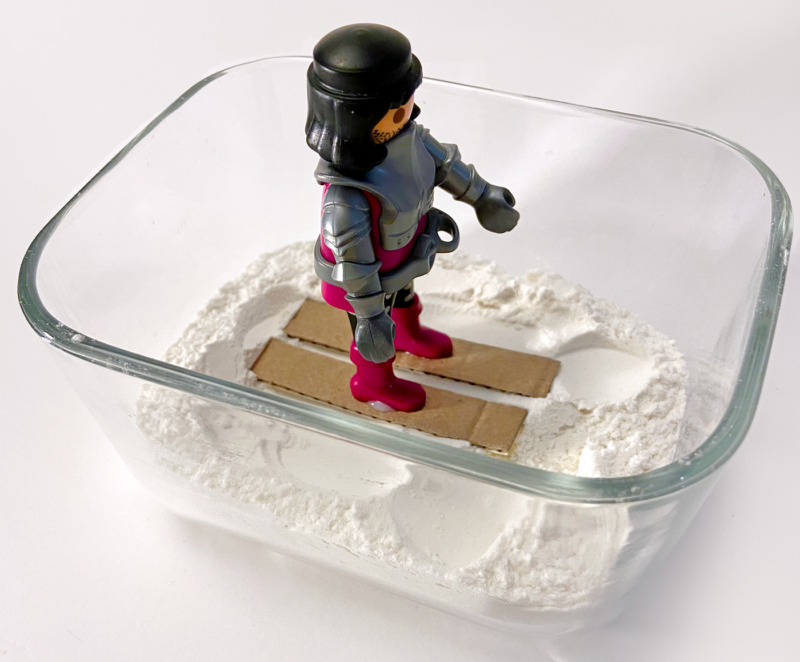
In this activity, students will explore why skis are so long and how they work in snow. You’ll create a skier using an action figure and cardboard “skis.” Then you’ll place them into a plate full of snow.
Learn more: Why are skis so long? activity at Science Buddies
45. Make a thermometer
Figure out just how cold it is outside with a homemade thermometer. Make a few thermometers and take measurements in different areas—in the sun and in the shade, inside your garage or by the street. How does the temperature change and what factors influence the temperature?
46. Create a snowstorm in a jar
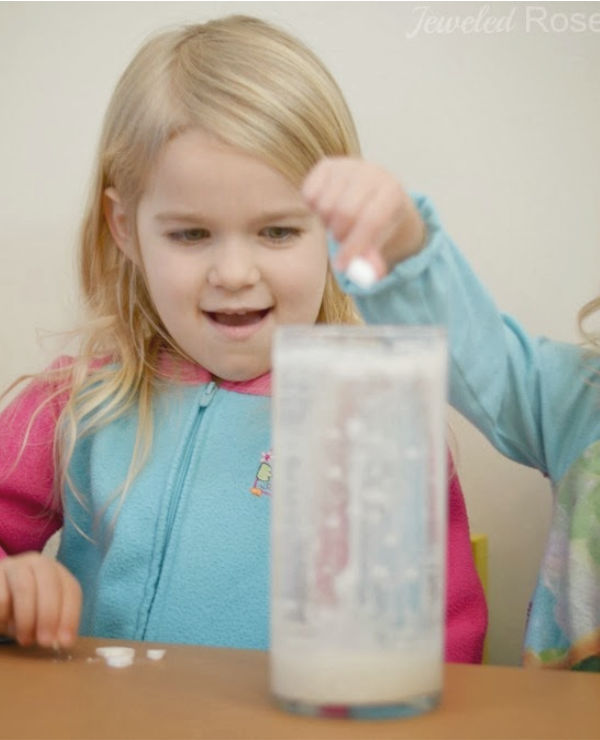
Combine things you probably already have around your classroom or house—baby oil, white paint, glitter, Alka-Seltzer, and food coloring—to create a snowstorm in a jar.
47. Discover how snowshoes work
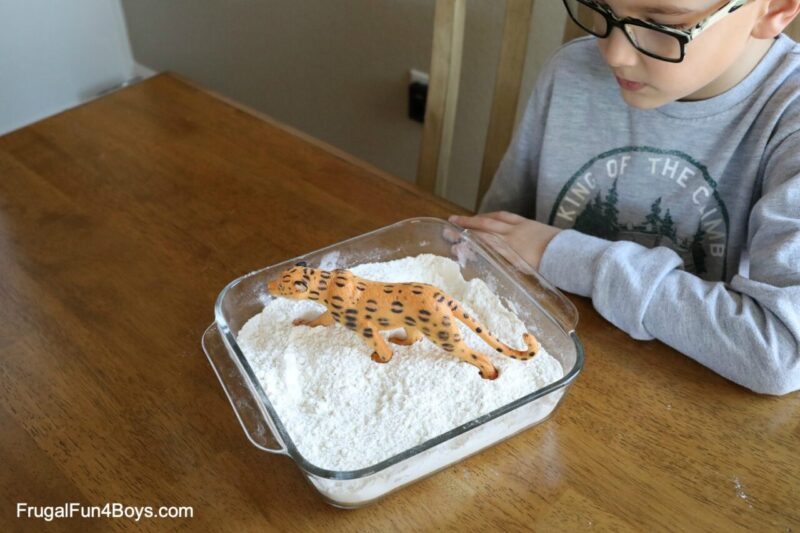
Use a pan of “snow,” animal toys, and snowshoes that you create to show how snowshoes keep us above the snow. This teaches the concepts of resistance and weight distribution. When weight is distributed across a larger area, the snow holds you up. This experiment will be even better if you have enough snow on the ground to try this out yourself.
Learn more: How Snowshoes Work activity at Frugal Fun for Boys and Girls
48. Find out what causes an avalanche
Learn what creates avalanches and re-create an avalanche with this activity.
49. Learn about animal hibernation
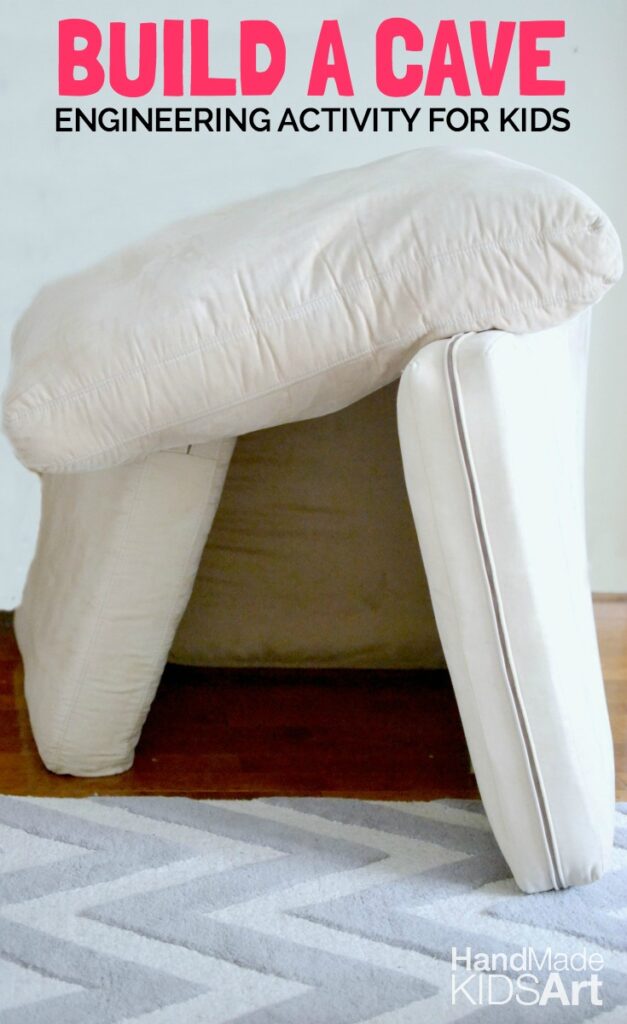
Read a book like Bear Snores On by Karma Wilson and talk about hibernation. What do bears need to hibernate? Then, challenge students to create a cave using materials that you have in the classroom or at home.
Buy it: Bear Snores On at Amazon
50. Build an igloo
Use marshmallows and other materials to build an igloo. Talk about what shapes make a good igloo and why those shapes provide solid structures.
Stay safe while you’re learning outdoors! Get our best Tips, Tricks, and Lesson Ideas for Winter Outdoor Learning.
Plus, get all the latest teaching tips and ideas when you sign up for our free newsletters.
